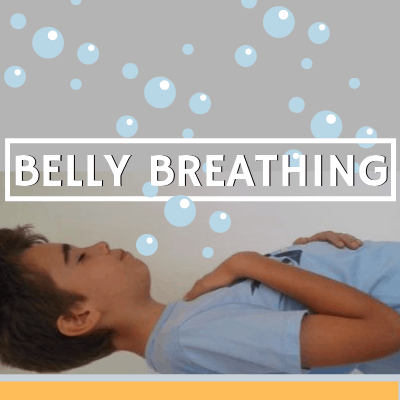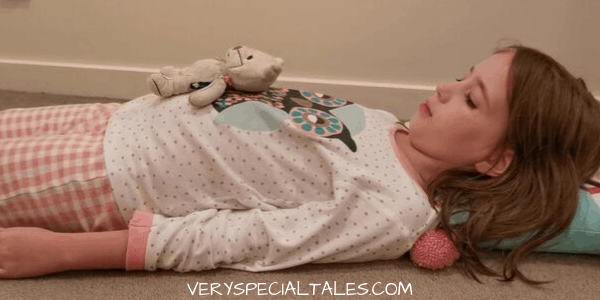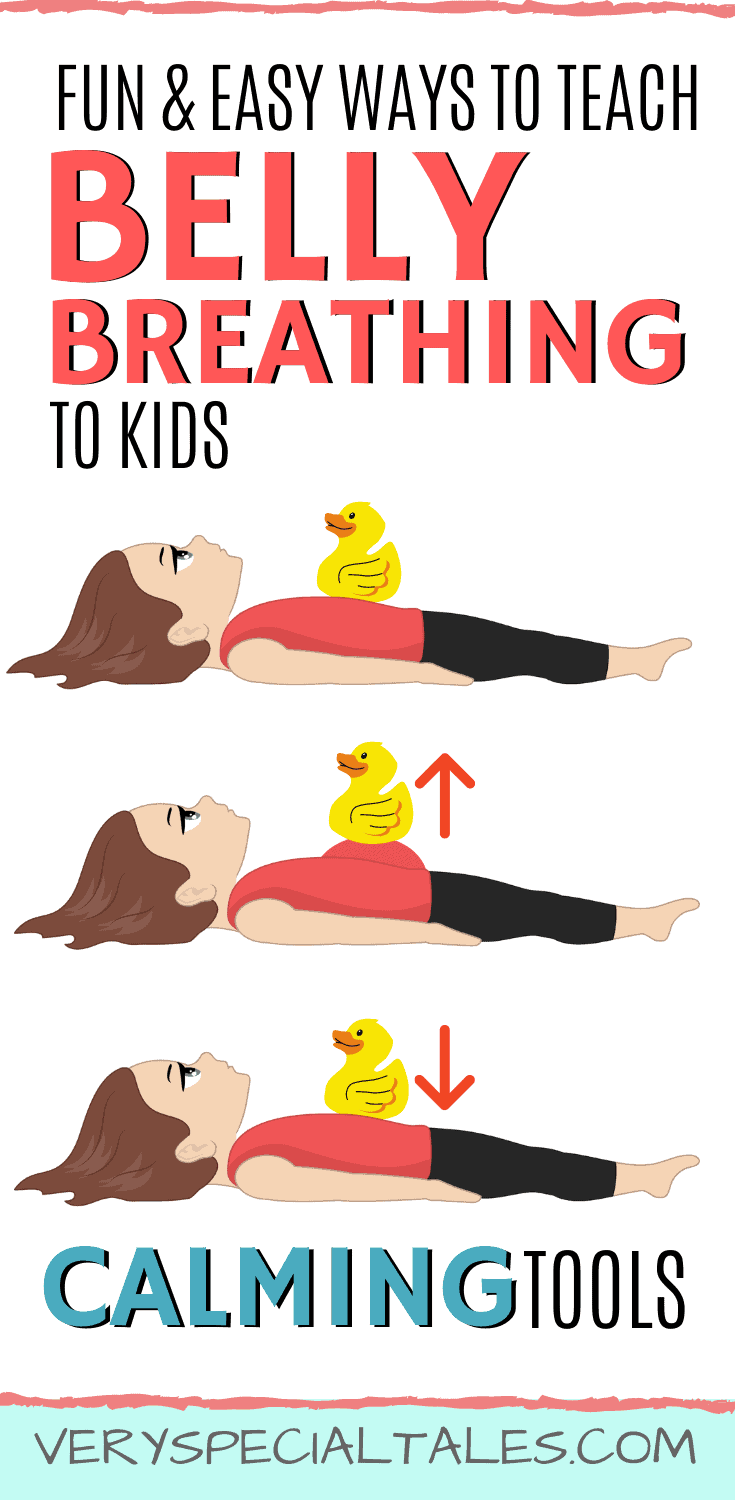
Belly Breathing for Kids: Fun Ways to Practice Diaphragmatic Breathing at Home
Belly Breathing for Kids: Balloon Breathing & Breathing with a Plush Toy
Diaphragmatic breathing (or belly breathing) is one of the most widely used exercises in clinical practice.
In psychological practice, training in deep breathing is often used either as a standalone technique to control excessive physiological arousal or as part of a relaxation package.
Post Index:
- What is Belly Breathing
- Benefits of Diaphragmatic Breathing
- How to do Diaphragmatic Breathing
- Belly Breathing for Kids
- Balloon Breathing
- Using a Plush Toy to Learn Deep Breathing
What is Belly Breathing /Diaphragmatic breathing / Abdominal breathing
Diaphragmatic breathing or abdominal breathing is often referred to as belly breathing.
In diaphragmatic breathing, the breathing is done by contracting the diaphragm. The air enters the lungs, the chest does not rise but the belly pushes outwards.
Benefits of Belly Breathing
A growing number of empirical studies suggest that diaphragmatic breathing may help relaxation responses and benefit physical and mental health.
Some of the benefits of deep breathing are:
- Improving breathing patterns and respiratory efficiency
- Helping to reduce anxiety and stress
- Helping to reduce pain sensation
- Improving concentration / sustained attention
Diaphragmatic breathing is a widely used supporting treatment in respiratory rehabilitation programs in:
- Chronic obstructive pulmonary disease as it improves breathing patterns and respiratory efficiency
- Patients who have undergone abdominal and thoracic surgery, as it reduces post-surgery pulmonary complications
- Patients with heart failure and muscle weakness, as it improves respiratory muscle function
(List of research papers on this topic at the end of the post)
Diaphragmatic Breathing Exercise
You can practice this exercise standing, sitting on a chair or laying down on a flat surface. For the purpose of describing this technique (and with the aim of portraying a more relaxed setting), I’m going to assume a laying down position.
- Lie on your back on a flat surface (e.g. your yoga mat) with your head supported.
- Bend your knees (optional: you may place a pillow underneath to support your legs)
- Place one hand on your belly, right under your rib cage. It will allow you to feel how your diaphragm is moving up and down as you breathe.
- Place your other one hand on your upper chest, this will allow you to monitor that your chest does not rise.
- Breathe in slowly through your nose
- Hold your breath for 3-5 seconds
- Breathe out slowly through your mouth
Belly Breathing for Kids: Balloon Breathing & Plush Toy Breathing
This is a very simple exercise that kids will be able to learn easily. But we can make it even more fun by using two different techniques;
- Imagery: Using our child’s imagination with the “Balloon Breathing Technique”
- Using props, like a soft toy.
Even if you practice this breathing exercise, standing or sitting on a chair, it may be easier to use the laying down position with your kid.
Balloon Breathing
We will use our child’s imagination to make this exercise fun and easier to learn.
Balloon breathing script:
After your child is comfortably positioned laying on the floor, with head supported and knees bent, follow the following script:
- Imagine your belly is a balloon. This balloon will get bigger as you breathe in, and it will get smaller as you breathe out
- Now, place your hand on your belly,
- Breathe in slowly through your nose, and feel that balloon getting bigger
- Hold your breath till I count 1, 2, 3
- Breathe out slowly through your mouth.
If you chose this technique because your child was feeling a bit anxious, repeat this exercise a few times till you feel your child is settling.
Using a Plush Toy to Help Belly Breathing

In this exercise, we are going to practice belly breathing with the help of one of your kid’s plush toys.
It will be fun and it will focus the attention on the belly upward movement.
Ask your child to lie on the floor, with the knees bent.
Place a favorite plush toy on your kid’s belly.
Follow the following script:
- Your teddy (name your kid’s toy) is sitting on your belly and would love to travel up and down. But we need to do it slowly so that ducky doesn’t fall from your belly
- Breathe in slowly through your nose, and let ducky go up
- Hold your breath till I count 1, 2, 3
- Breathe out slowly through your mouth.

How Often Should I Practice Belly Breathing?
It actually depends on the reason why you are practicing this exercise.
I’ve read recommendations to practice this type of exercise 3-4 times a day for around 5 minutes.
When I first learned about this technique, it was in the context of my psychology studies, as a tool to help with anxiety. Deep breathing training was recommended following a pattern of 4/5 repetitions about 10/15 times a day, especially during stressful situations.
As I use it with my kids in order to help them settle and self-regulate, I don’t follow any of the above recommendations.
We just practice breathing exercises when we feel we need to calm down and settle. But practicing these fun breathing exercises in advance, helps us learn the technique so that we can apply it when we really need it.
Research on Benefits of Deep Breathing and/or Diaphragmatic Breathing
Reseach on this topic keep growing. You may find below a selection of studies on various benefits of diaphragmatic breathing.
- The effect of deep and slow breathing on pain perception, autonomic activity, and mood processing – an experimental study
- The Effect of Diaphragmatic Breathing on Attention, Negative Affect, and Stress in Healthy Adults-(read research)
- Comparison of two instructions for deep breathing exercise: non-specific and diaphragmatic breathing (read research)
- Can diaphragmatic breathing modify chest wall volumes during inspiratory loaded breathing in patients with heart failure? (read research)
Other Deep Breathing Resources in this Blog
- How to Practice the Lazy 8 Breathing Exercise (super effective tool!)
Other Calming Resources in this Blog
Belly Breathing for Kids: Fun Ways to Practice Diaphragmatic Breathing at Home




3 Comments
Sarah Waack
Thank you so much, I am SO glad to have found your site because I am Home Schooling my two beautiful Special Needs Daughters and really need help calming down my Autistic Older Daughter!
Clara
Thanks a lot, Sarah! I’m really happy you have found this site useful.
Dr Neelam Sharma
Thanks alot for sharing this technique. Being physiotherapist sometimes dnt know how to work with children on breathing…It helped alot